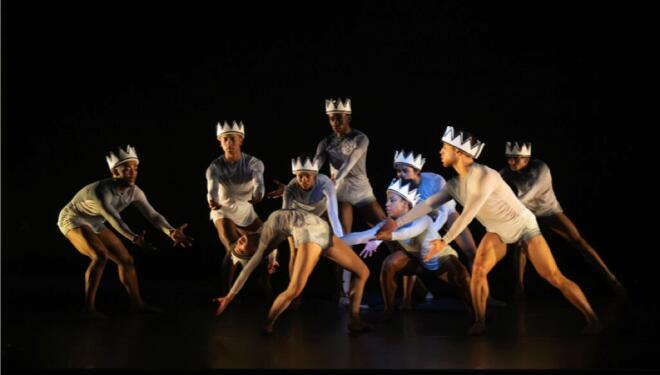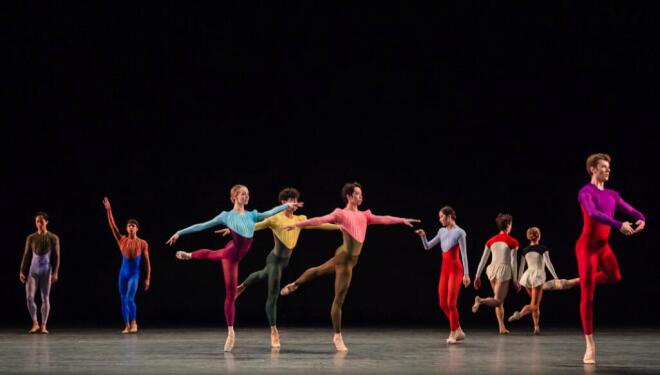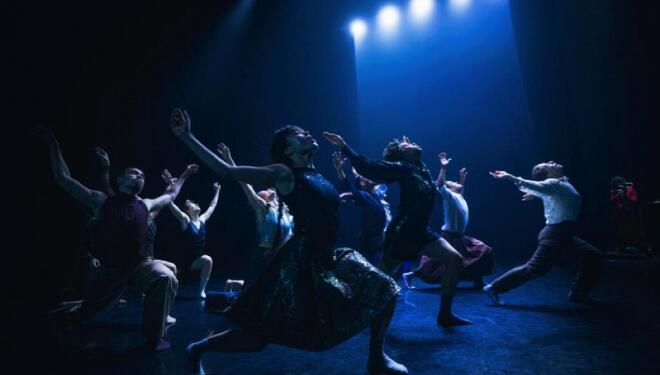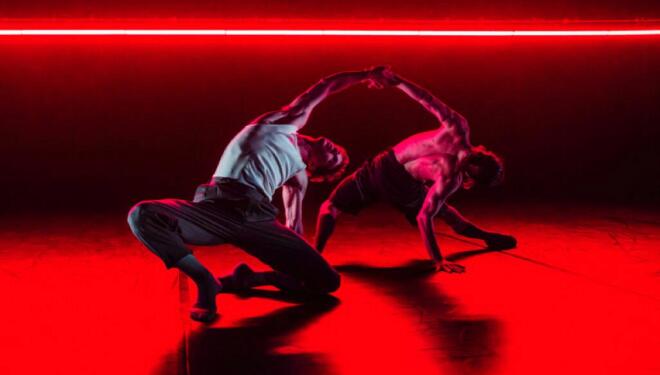
That said, I wonder how works heavy on concept would come across if we sat down to watch having read or heard nothing at all about them. Would the concept be immediately apparent? And if not, would it matter?
I was entertaining those questions as I left The Place after the performance of Frontiers, which brought together two cutting edge works: the first, Skinners, by the Australian choreographer Melanie Lane, the second, August, by NDCW director Matthew William Robinson.
Skinners is billed as an a exploration of ‘how the possibilities of technology blur with our physical reality, letting the dancers’ human bodies glitch between flesh and illusion, fact and fiction.’
The first image is striking. Seven dancers in colourful, outlandish, clownish costumes and vaguely sinister masks (costume design Don Aretino) form a tight diagonal line centre stage. To the crescendo of Yamila Rios’s electronic score, they shuffle slowly and rhythmically forward, the line gradually breaking up into different formations, now separate individuals, now converging into a cluster.
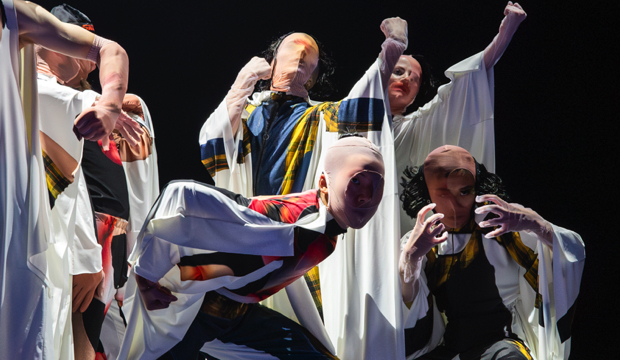
National Dance Company Wales, Skinners. Photo: Studio Cano
They dance energetically, almost maniacally, barely relating to each other, though they occupy the same space under Ceri James’s harsh lighting.
Halfway through the lights mellow, subtly shifting from bright white to a softer yellow as the dancers divest themselves of their costumes stripping down to plain humanity. The music slows down, movement becomes more organic, bodies relate to each other.
If you come to Skinners with prior knowledge, you conclude that the first half corresponds to the dehumanising effect of digital technology, and the second highlights our basic, endangered humanity.
If you don’t, though, I’m not entirely sure the concept carries, though the visual is never less than gripping.
August (pictured top) is very different. A very human, sensual piece, we’re told it ‘explores the stretch between who we are and who we are becoming in times of profound personal change.’
As it starts, a raised line of red neon bars casts a subdue glow over a couple writhing entangled on the ground, Torben Sylvest’s musical score slowly and inexorably rising.
An episodic piece, brief blackouts separate the entrance of different couples, the neon bars going on and off, alternating between a full line or just a lit section.
As the piece progresses, designer Emma Jones’s lights change between red, green and white (whether by accident or design reproducing the colours of the Welsh flag) and the couples, now kitted out in ordinary, predominantly grey everyday clothes (designer George Hampton Wale) merge into an anonymous ensemble.
Their movement is assertive, expansive and always elastic.There are no rough edges, everything flows through repeated whirling turns, arms stretching out, smooth back bends.
I felt the overriding concept of August – people relating to each other – carried better than that of Skinners, though the piece felt longer than its 30 minutes. What was never in doubt and made the performance very enjoyable was the skill and commitment of NDCW dancers.
| What | National Dance Company Wales, Frontiers Review |
| Where | The Place, 17 Duke's Road, London, WC1H 9PY | MAP |
| Nearest tube | Euston (underground) |
| When |
08 Oct 24 – 09 Oct 24, 19:30 Dur.: 90 mins including a 20 minute interval and the finale |
| Price | £10m (concessions £16) |
| Website | Click here to book |

